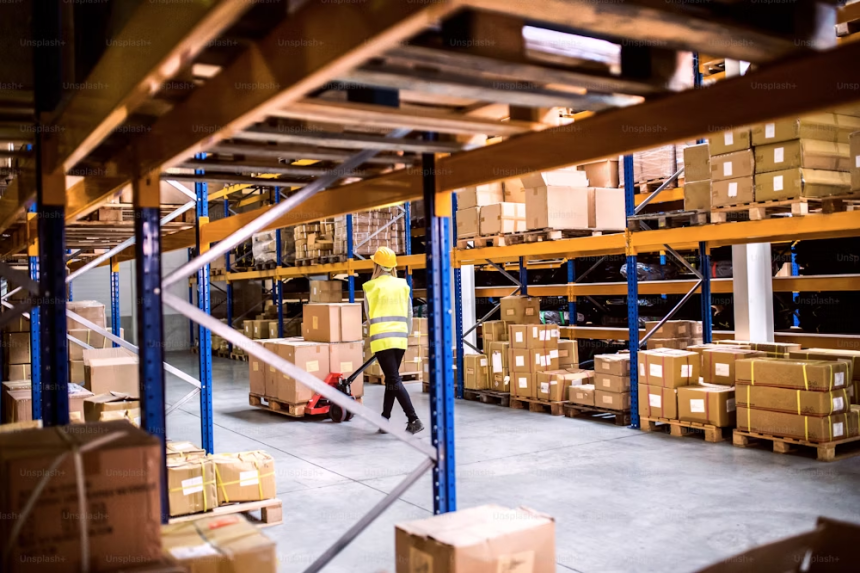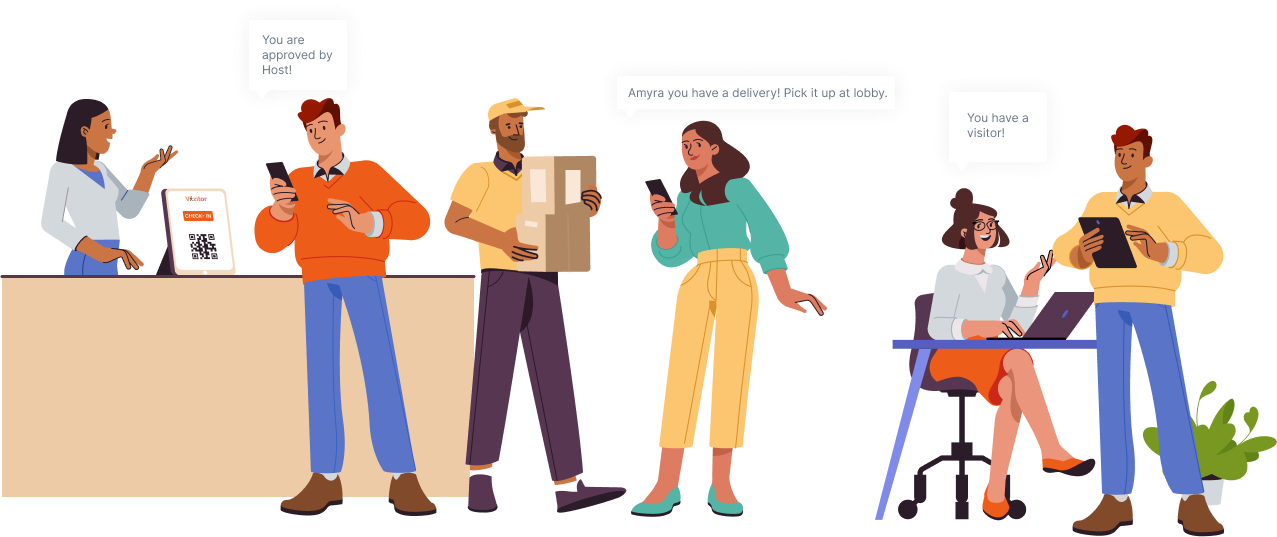Table of Content
Try Vizitor for Free!
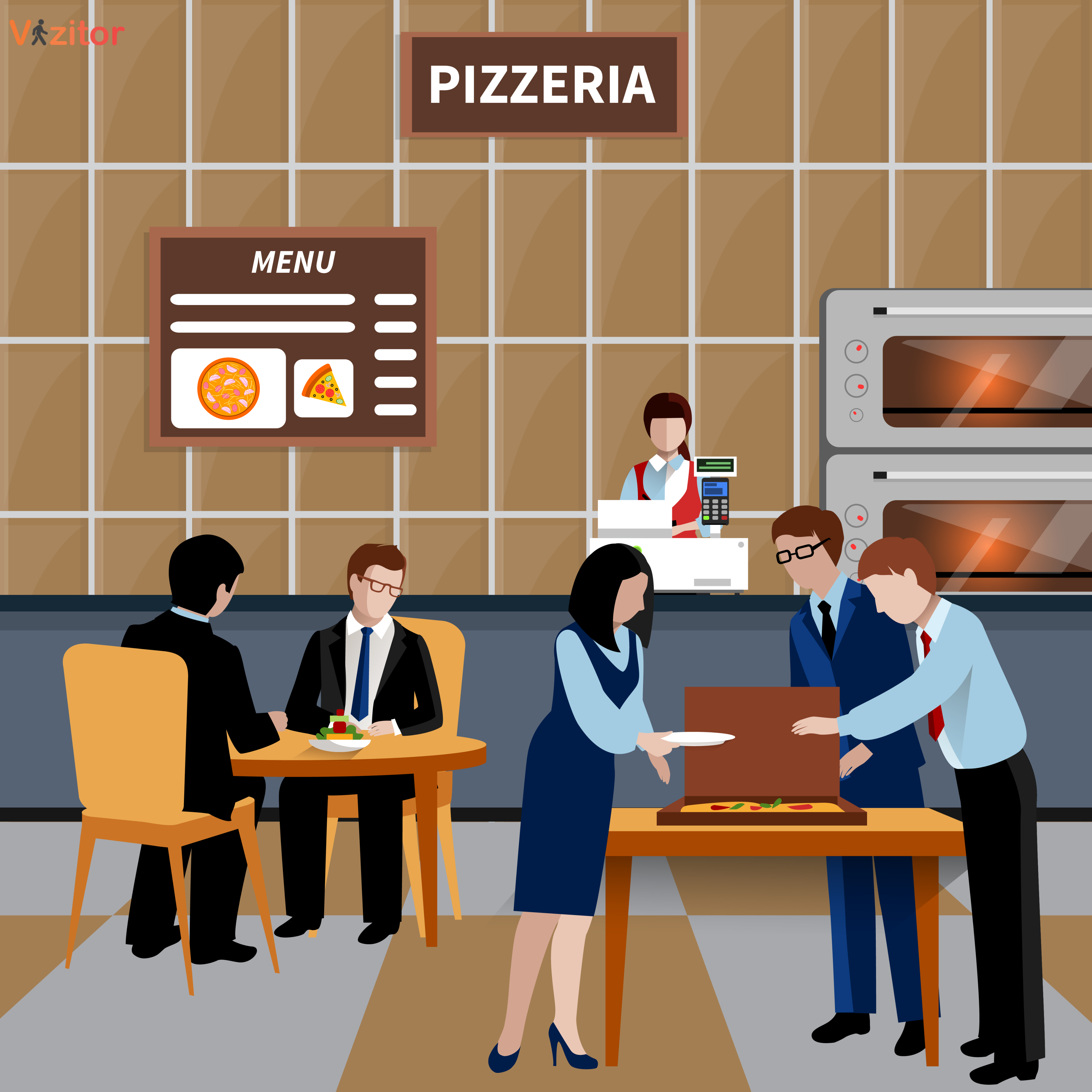
Fri, Dec 27, 2024
Read in 12 minutes
Did you face any situation when you walked into a busy fast-food outlet during your lunch break?
What did you see?
Of course, the same scenarios……
The lines are long, the staff is struggling to keep up, and customers are visibly frustrated. You glance at the clock, wondering if you’ll even have time to grab your meal before heading back to work.
Now, imagine the same restaurant with self-service kiosks, digital queue apps, and real-time order tracking. Suddenly, the chaos disappears—lines move faster, orders are accurate, and customers leave with smiles.
This highlights how adopting the right tools can transform the Quick Serve Restaurant (QSR) experience for both customers and staff.
In the fast-paced world of Quick Serve Restaurants (QSRs), where every second counts, using digital technology is no longer optional—it’s essential.
This post explores the essential tools every Quick Serve Restaurant needs to tackle challenges like long queues, incorrect orders, and operational inefficiencies, ensuring a seamless dining experience for modern customers.
Let’s go through various smart solutions that are redefining the QSR industries-
What is a Quick Serve Restaurant?
A Quick Serve Restaurant (QSR), often called a fast-food restaurant, is a dining establishment that focuses on providing quick, efficient, and affordable meals.
These restaurants prioritize speed and convenience to cater to customers who are on the go. Typically, QSRs feature limited menus, self-service options, and simplified processes to ensure fast turnaround times.
Popular Examples of Quick Serve Restaurants
- McDonald’s: Known for its self-service kiosks and standardized menu.
- Subway: Famous for customizable sandwiches with efficient assembly lines.
- Domino’s: Leading in online ordering and quick delivery.
- KFC: Combines traditional counter service with app-based ordering.
Key Features of Quick Serve Restaurants
- Speed and Efficiency
- Designed to minimize wait times for ordering, preparation, and serving.
- Use of advanced tools like self-service kiosks and online ordering apps to streamline operations.
- Standardized Menu and Processes
- Offer limited yet highly popular items, ensuring consistent quality and fast preparation.
- Recipes and processes are standardized to maintain uniformity across locations.
- High Volume, Low Cost
- Focus on serving a large number of customers daily at affordable prices.
- Menu pricing is designed to attract repeat customers.
- customers as possible in a short time.
- Takeaway and Delivery Options
- Majority of the sales come from takeaway or delivery services.
- Integration with delivery apps like Swiggy, Zomato, and Uber Eats has expanded customer reach.
- Technology Operations
- Heavy reliance on digital tools like queue management systems, kitchen display systems, and digital payment solutions.
- Use of analytics to understand customer preferences and improve service.
Quick Serve Restaurants (QSRs) are a vital segment of the food service industry, characterized by their focus on speed, efficiency, and affordability.
What are the Common Challenges Faced by the Quick Serve Industry?
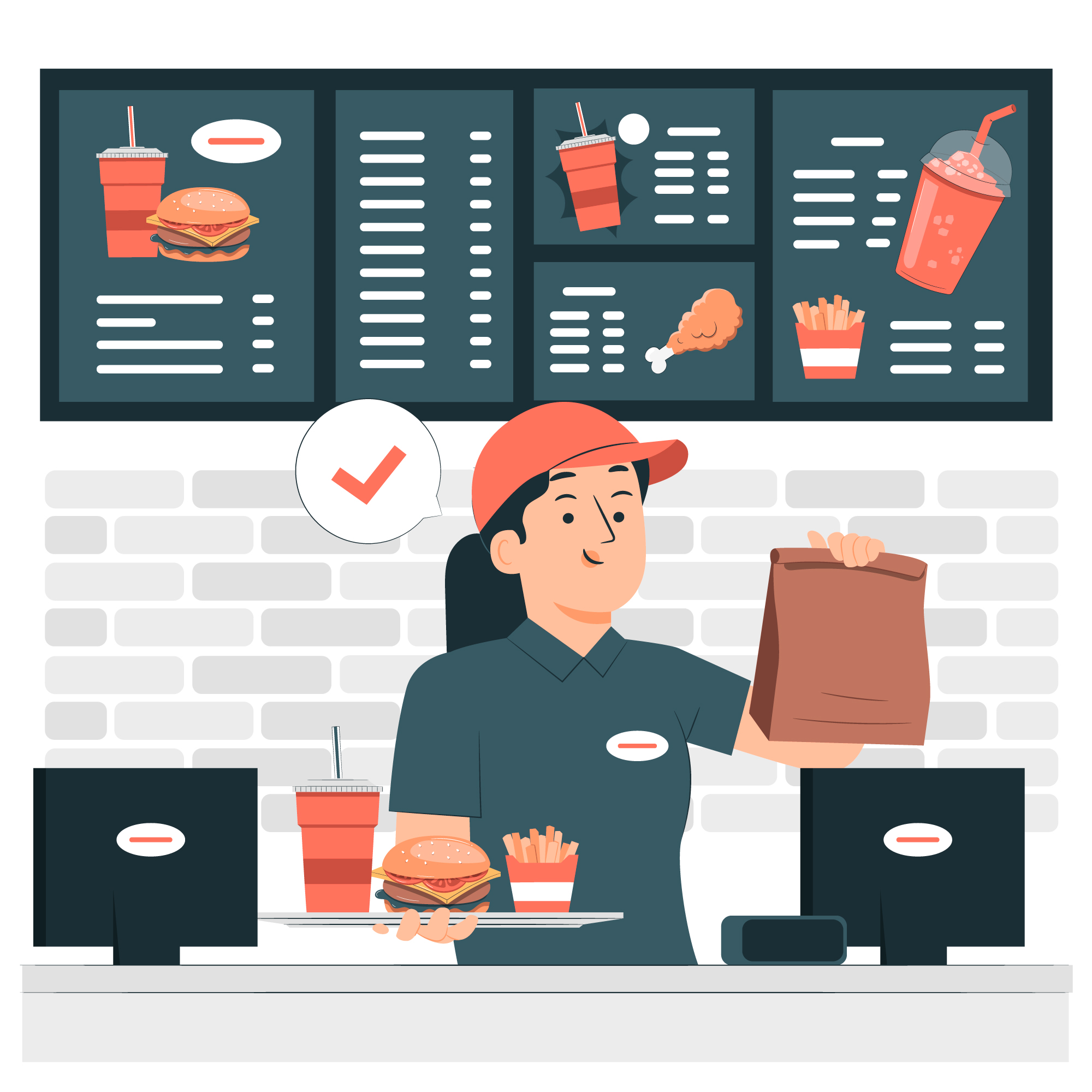
Managing queues effectively is a critical challenge for restaurants especially at Quick Serve Restaurants (QSRs), directly impacting customer satisfaction and operational efficiency.
Whether it’s during rush hours at a coffee shop or a bustling fast-food outlet, long wait times and operational inefficiencies can hurt customer satisfaction and revenue.
Let’s explore the key challenges faced by Quick Serve Restaurants :
1. Long Wait Times:
Suppose you and your family visit a burger outlet. You see a long queue, become frustrated, and decide to leave. This results in a loss not just for the day but potentially forever as you might choose a competitor next time.
In QSRs, speed is the most defining factor. Extended queues during peak hours can deter customers.
Long queues can result in:
- Abandoned Orders: Research shows that 57% of customers abandon a purchase if they experience long wait times.
- Revenue Loss: A study in the UK highlighted that businesses lose £11.3 billion annually due to inefficient queue management.
2. Inefficient Workforce Allocation
When staff are overburdened by a lack of efficient queue management, it often leads to:
- Order Delays: Employees juggling multiple orders might make errors, causing dissatisfaction.
- Poor Resource Utilization: Peak-hour mismanagement leads to bottlenecks, while idle hours may leave resources underutilized.
So, a fast-food restaurant operating without queue management software often struggles to handle unexpected customer surges, leading to chaotic service during peak times.
3. Unpredictable Customer Experience
Without clear queue management, customers face:
- Uncertainty about Wait Times: Lack of transparency irritates customers who are unsure when their order will be served.
- Negative Brand Perception: Unhappy customers are less likely to recommend the brand.
Studies indicate that when Starbucks introduced mobile ordering, they managed to eliminate long queues at their busiest locations.
This resulted in improved customer satisfaction and boosted store sales by 9% in the first quarter.
4.The Challenge of Managing Delivery and Takeaway Orders
In the world of online ordering and fast delivery services, balancing dine-in, takeaway, and delivery queues is a common challenge.
Issues include:
- Delivery Delays: Poor coordination between dine-in and delivery orders disrupts workflows.
- Order Mix-ups: Manual processes increase the risk of errors.
5. Inconsistent Use of Digital Solutions
Many Quick Serve Restaurants lack the infrastructure to manage queues digitally, leading to:
- Missed Opportunities for Automation: Self-service kiosks, virtual queues, and analytics can significantly improve efficiency but are often underutilized.
- High Operating Costs: Dependence on manual processes drives up labor costs without delivering efficiency.
Statistics:
-
Research reveals that cutting wait times by just 10 minutes can significantly enhance customer satisfaction, leading to a potential 20% increase in repeat visits.
-
Customer Behavior Trends: Surveys indicate that nearly 50% of diners abandon a restaurant if the wait time feels excessive, resulting in substantial revenue loss for quick-serve establishments.
-
Restaurants adopting technologies like self-service kiosks and virtual queues have reported a 25% improvement in customer turnover rates during peak hours.
6.Competition: Standing Out in the Crowded QSR Market
In a Competitive market, differentiation is key. Competition in the Quick Service Restaurant (QSR) industry is fierce, with multiple chains offering similar menus and services.
To stand out, QSRs need to offer unique menu items, exceptional customer service, and develop a strong brand identity that resonates with their target audience.
To stand out, it’s crucial that a restaurant provides a seamless and exceptional customer experience from the moment a guest arrives.
7 Must-Have Technology Tools and Solutions for Quick Serve Restaurants
The fast-paced nature of Quick Serve Restaurants (QSRs) demands innovative technology to keep customers happy and operations smooth.
The QSR industry continues to evolve with the integration of advanced technologies like AI, machine learning, and data analytics.
By addressing key challenges like queue management and enhancing operational efficiency, QSRs are well-positioned to cater to the demands of modern consumers.
Here’s the list of robust digital tools and solutions for Quick Serve Restaurants:
1. Queue Management Systems (QMS)
Efficient queue management is the backbone of any successful QSR. A Queue Management Software ensures that customers don’t feel frustrated by long wait times and helps staff manage orders seamlessly.
Features and Benefits:
-
Virtual queues allow customers to book their spot in line via mobile apps.
-
Digital signage displays real-time order statuses, reducing confusion.
-
Self-service kiosks speed up ordering, freeing staff for other tasks.
McDonald’s uses QMS to reduce peak-hour chaos. With digital kiosks for ordering, order-tracking displays, and a streamlined layout, they serve millions daily without compromising on customer satisfaction.
By using effective queue management solutions, McDonald’s creates a seamless and satisfying experience for its customers.
Clear expectations, transparent wait times, and streamlined operations ensure efficiency and customer satisfaction, making it a win-win situation for all.
Vizitor’s Queue Management System offers tools like online queue booking and digital signage, ensuring a smooth flow of customers.
2. Self-Service Kiosks
Self-service kiosks have revolutionized the QSR industry by putting the power in the hands of customers.
Self-service kiosks enable customers to independently complete tasks like checking in, placing orders, or making payments. This self-sufficiency reduces the need for staff involvement, helping to shorten wait times and improve service speed.
Features and Benefits:
-
Customization: Customers can modify their orders without errors.
-
Speed: Eliminates the need to wait in long lines.
-
Upselling Opportunities: Suggestive selling features encourage add-ons like drinks or desserts.
3. Digital Signage
Digital signage plays a critical role in guiding customers, showcasing menus, and displaying promotional offers.
Features and Benefits:
-
Real-time Updates: Instantly modify menu items or prices based on stock.
-
Queue Status: Displays waiting times and order tracking information.
-
Promotions: Highlight combo deals or limited-time offers.
-
Many digital signage kiosks are equipped with touchscreens, allowing customers to interact with the kiosk for self-service actions such as checking the queue status, navigating through menus, or accessing additional services.
Starbucks uses digital signage for personalized greetings and to update their drink offerings based on the time of day.
4. Online Ordering and Mobile Apps
Online ordering has become a crucial component for Quick Serve Restaurants (QSRs) to meet the increasing demand for convenience and speed, especially in today’s digital age.
Features and Benefits:
-
Customers can place their orders ahead of time through mobile apps or online platforms, which helps eliminate the need to wait in long queues.
-
Online ordering systems are integrated with various payment gateways and digital wallets, enabling customers to pay quickly and securely. This eliminates the need for cash transactions or card swiping in-store, speeding up the overall customer experience.
-
Customers can avoid the hassle of waiting in line and can place orders from the comfort of their homes, offices, or even on the go.
5. Ticketing Kiosks
Ticketing kiosks are essential for managing large crowds during events or busy hours.Unlike traditional counters that operate within business hours, digital ticketing dispensers are available around the clock.
Features and Benefits:
-
Organized Queueing: Customers receive a digital ticket with their queue number.
-
Automated Notifications: Alerts customers when their order is ready.
-
Enhanced Customer Satisfaction: Reduces the stress of waiting in undefined lines.
-
The kiosk offers a range of payment options, including credit/debit cards, digital wallets, and contactless payments, allowing for quick and secure transactions.
Studies show that 70% of customers prefer self-service ticketing kiosks over traditional counters because of their speed, ease of use, and convenience.
6. Visitor Management Systems
The reception area is the first point of contact for guests, and making a positive first impression is crucial for any Quick Serve Industry.
However, managing guest arrivals can be a challenge without a streamlined system in place. This is where Vizitor’s Visitor Management System comes into play.
By automating the guest check-in process, VMS eliminates the traditional manual registration, reducing wait times and ensuring a smoother experience for both customers and staff.
Key Features:
-
Automatic Notifications: Hosts receive instant notifications with detailed guest information, including their photo, ensuring a quick and personalized welcome.
-
Secure Data Management: All guest information is stored in a secure admin portal, accessible anytime for easy retrieval and tracking.
-
Printed Badges: Guests receive printed badges upon check-in, adding an extra layer of security and confirming that the check-in process is complete.
-
Modern Reception: By integrating a visitor management system like Vizitor, restaurants can maintain a modern, organized, and clutter-free reception area.
This system not only streamlines operations but also helps in creating a safe, welcoming environment for all visitors, enhancing the overall dining experience.
Technology tools like queue management systems, self-service kiosks, and digital signage are no longer optional for Quick Serve Restaurants—they’re essential for staying competitive.
By adopting these solutions, QSRs can manage queues efficiently, enhance customer satisfaction, and boost profitability.
Case Study: Chipotle’s ‘Chipotlanes’ Innovation
This step led to a 10-15% increase in sales at locations with Chipotlanes, demonstrating the effectiveness of integrating technology to manage queues and enhance customer experience.
7. Supply Chain Management
Supply chain management (SCM) is essential for Quick Service Restaurants (QSRs) to ensure smooth operations.
Managing the flow of raw materials to finished goods is crucial in maintaining quality while avoiding food waste or shortages.
SCM tools help QSR owners plan the supply chain, adapt to changing circumstances, and meet customer demand efficiently.
With technology in place, restaurant owners can optimize inventory, reduce waste, and enhance operational efficiency, making it a key element in ensuring business success in the fast-paced QSR industry.
Vizitor: Your Smart Solution for Quick Serve Restaurants
As already discussed, efficiency and customer satisfaction are paramount in the QSR industry. Vizitor plays a crucial role in enhancing both by offering an intuitive and automated visitor management system designed for QSRs.
Vizitor provides a cloud-based solution designed to optimize your restaurant’s operations with key features:
-
Automated Service Assignment: Effortlessly guide customers to the right staff member based on their specific requirements.
-
Instant Updates: Keep customers informed with real-time updates on wait times and their position in the queue.
-
Easy Navigation: With an intuitive interface, both staff and customers enjoy a seamless and hassle-free experience.
The Future of QSR: Adapting to Consumer Needs with Innovation and Efficiency
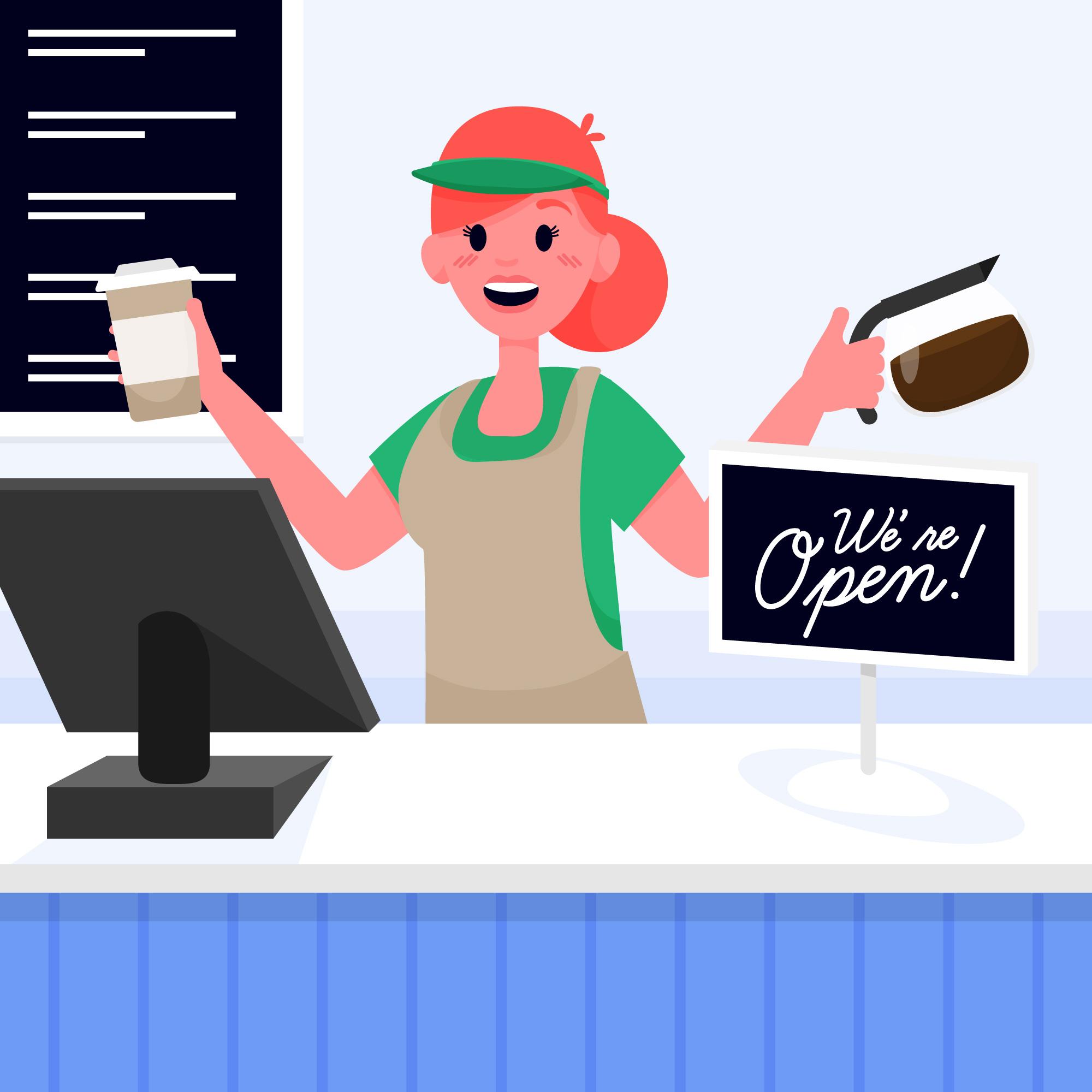
The Quick Service Restaurant (QSR) industry is undergoing rapid transformation, because of evolving consumer preferences and technological advancements.
To stay competitive and maintain customer satisfaction, QSR businesses must embrace innovation and adapt to these shifts.
Key trends shaping the future of the industry include:
1. Digital Transformation:
With the increasing reliance on online ordering, mobile apps, and delivery services, QSRs must enhance their digital presence to meet customer expectations.
Tools like Vizitor’s Queue Management System play a key role in streamlining the ordering process and reducing wait times, improving overall customer experience.
2. Health and Wellness Focus:
As consumers demand healthier options, QSRs are offering more nutritious meals and clearly displaying nutritional information.
By using technology like self-service kiosks and digital signage, restaurants can highlight healthier choices, making it easier for customers to make informed decisions.
3. Customization and Personalization:
Today’s customers expect personalized dining experiences. Offering customizable menu options and personalized promotions can increase customer loyalty.
Tools such as Vizitor’s visitor management system help personalize customer interactions from the moment they arrive, enhancing their overall experience.
4. Sustainability:
Consumers are becoming more eco-conscious, pushing restaurants to adopt sustainable practices. This includes using eco-friendly packaging and reducing food waste.
Vizitor helps in managing customer flow efficiently, reducing waste by optimizing seating and reducing overstocking.
So, the future of Quick Serve restaurants lies in the ability to adapt swiftly to changing customer needs, technological advancements, and industry trends.
Don’t wait for the future to arrive—create it. With the right tools, your restaurant can rise to meet new challenges, delight your customers, and ensure long-term growth in the competitive world of quick service dining.
Are you ready to take your QSR to the next level?
Implement Vizitor and see how it can help streamline your restaurant’s operations and elevate your service!
Start today and stay ahead in the fast-paced world of quick-service dining. Your customers will thank you for it!!







